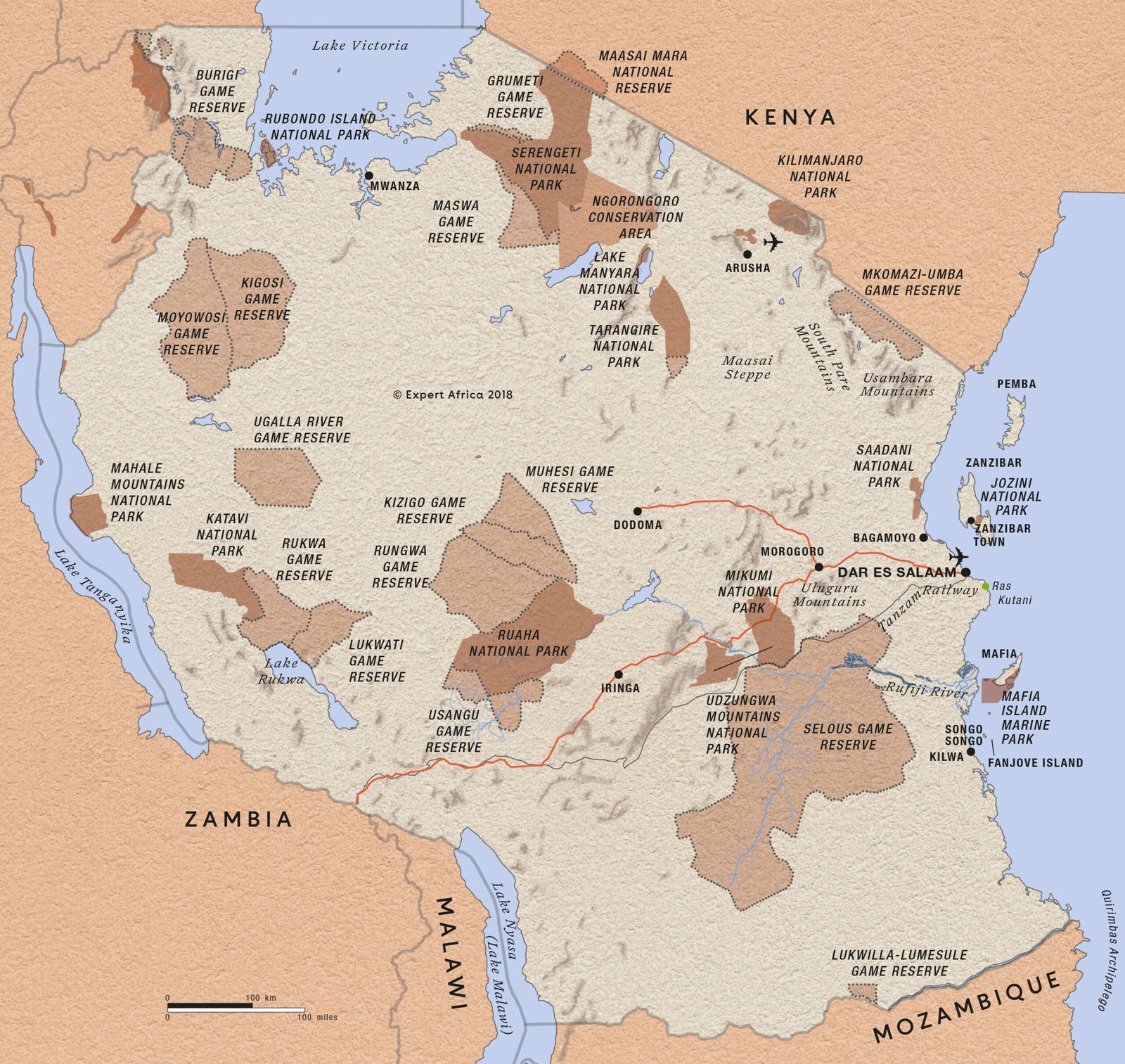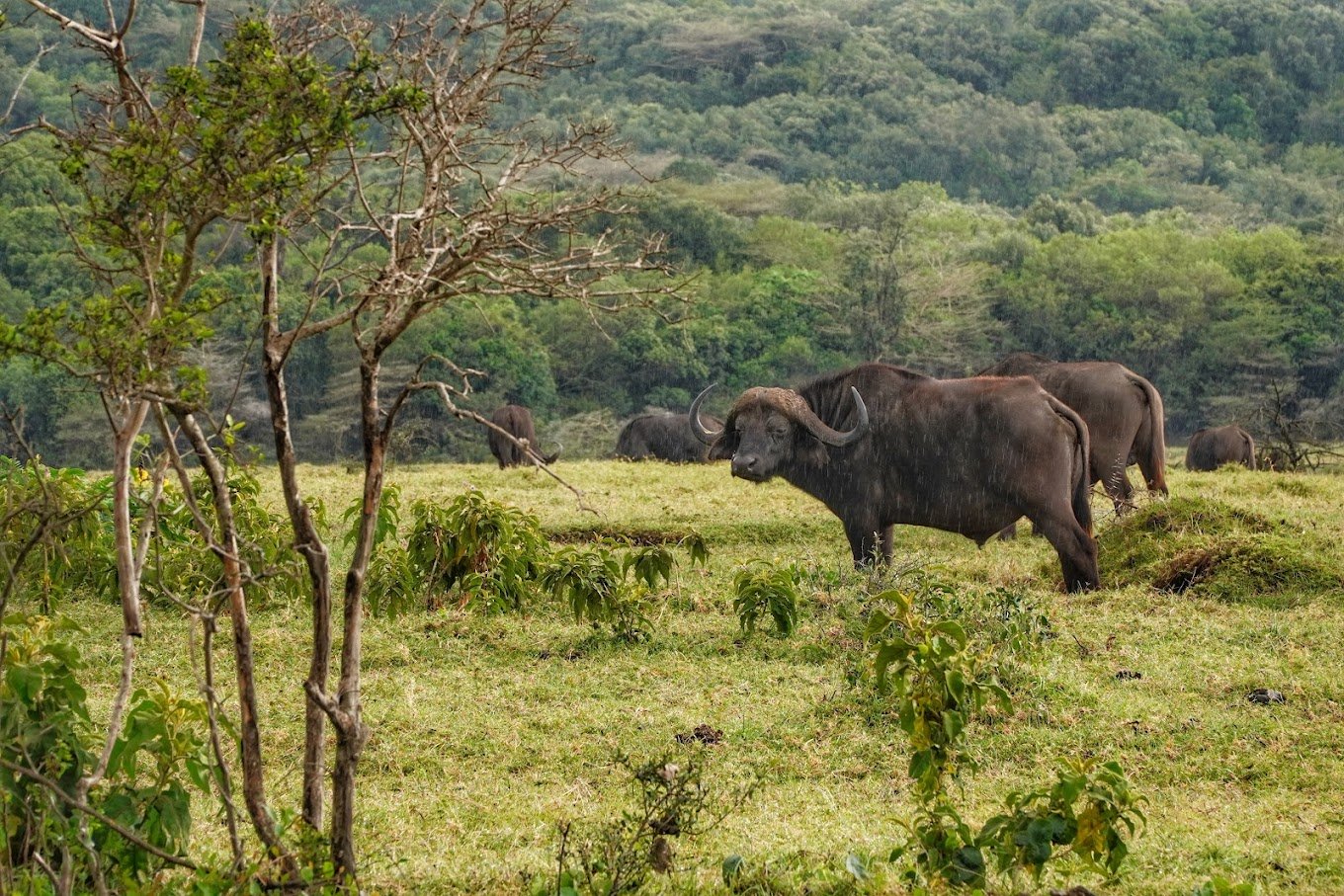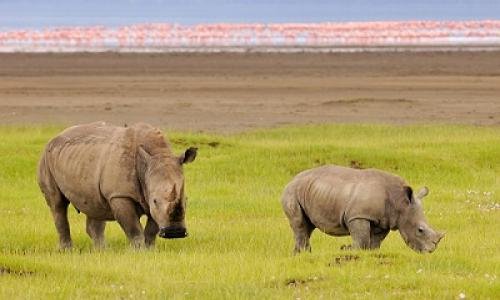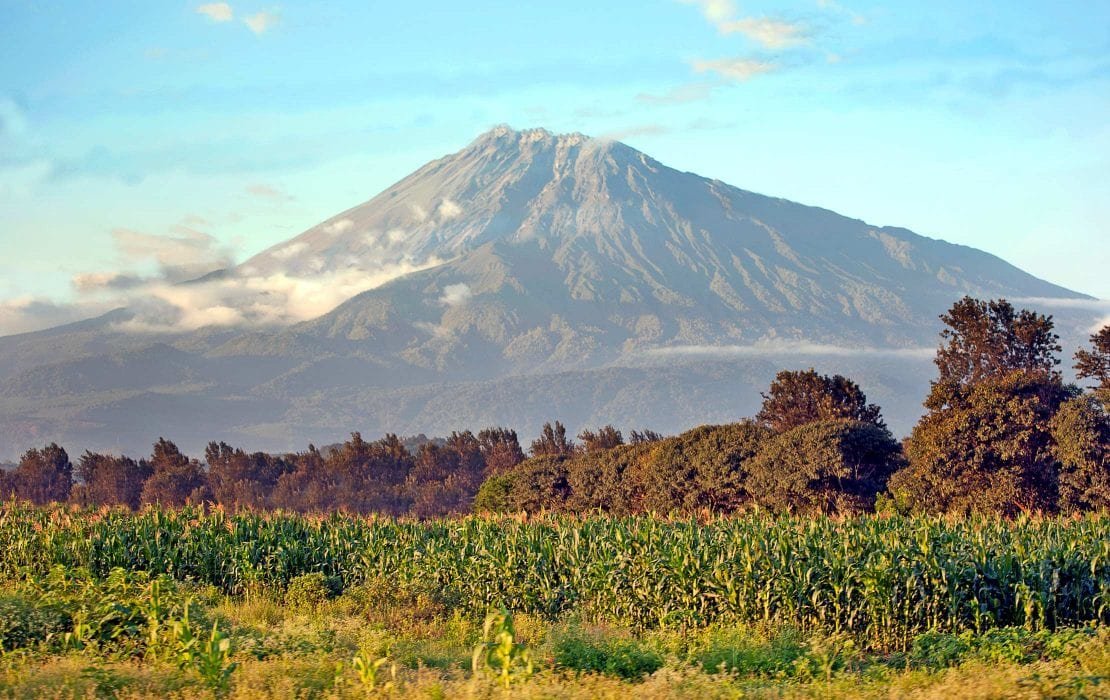Tanzania
Tanzania is the heart of the safari experience: boasting extraordinary wildlife, rich cultural heritage, and stunning natural scenery, it is a truly magnificent destination.
Kenya invented the safari: with its spectacular wildlife, cultural diversity and breathtaking landscapes, this is an utterly dazzling destination.

Tanzania
Tanzania is the heart of the safari experience: boasting extraordinary wildlife, rich cultural heritage, and stunning natural scenery, it is a truly magnificent destination.
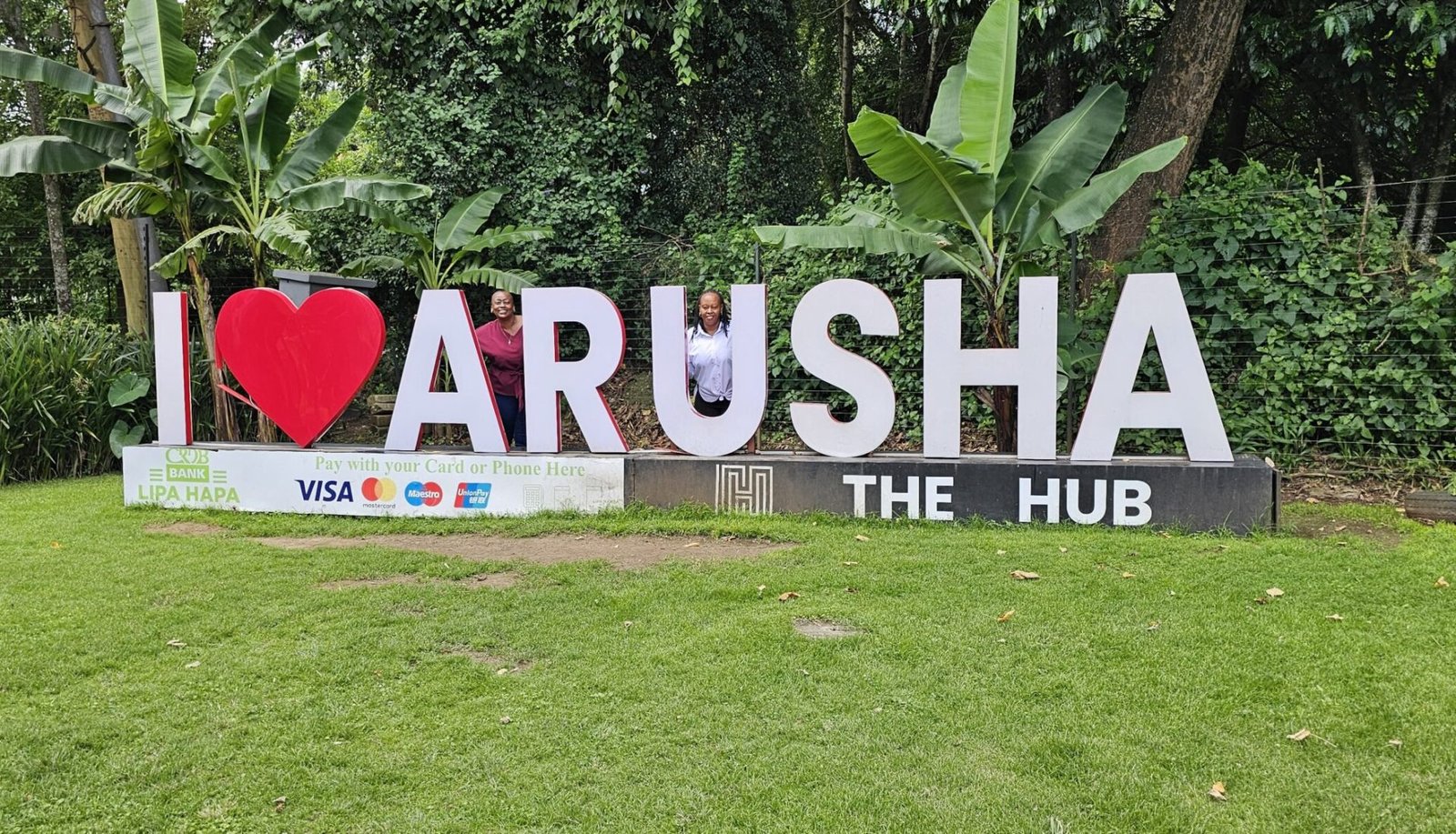
Tanzania's top safari and holiday destinations
Tanzania’s key regions for visitors showcase an impressive diversity and are spread throughout the country, each offering unique opportunities for wildlife viewing and scenic exploration.
In the north, adjacent to Kenya’s Maasai Mara, the vast Serengeti National Park is renowned for the Great Migration, where millions of wildebeest and zebras make their epic journey across the plains.
Just east of the Serengeti, the Ngorongoro Conservation Area offers a blend of breathtaking landscapes and rich wildlife within its massive volcanic crater, often referred to as the eighth wonder of the world.
Further south, the Selous Game Reserve (now part of the larger Nyerere National Park) is one of the largest faunal reserves of the world, known for its elephants, wild dogs, and variety of birdlife, offering a more secluded safari experience.
To the west, the remote Katavi National Park provides a truly off-the-beaten-path adventure with large buffalo and hippo populations, while the Mahale Mountains along Lake Tanganyika are famous for chimpanzee trekking.
In the northwestern corner, Gombe Stream National Park is another haven for chimpanzee enthusiasts, offering intimate primate encounters in a lush forest setting.
Southern Tanzania is also home to Ruaha National Park, known for its rugged landscapes and high concentration of elephants and predators, providing a wild and less crowded safari experience.
Finally, Tanzania’s coast and the islands of Zanzibar offer pristine white sand beaches combined with a rich historical and cultural tapestry, making it a perfect ending to a diverse Tanzanian adventure.
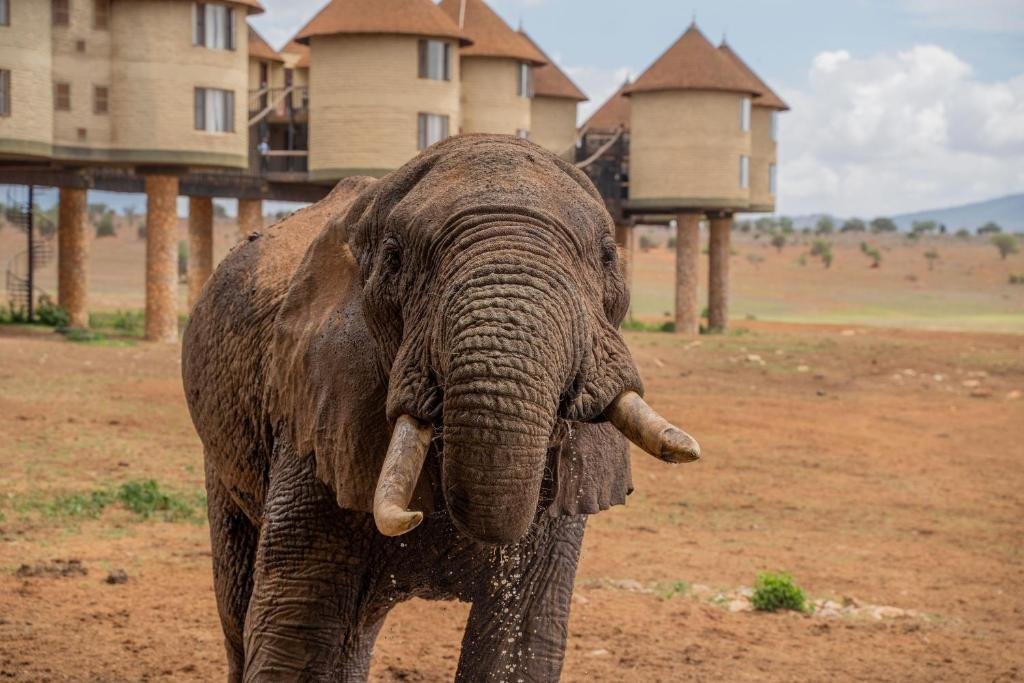
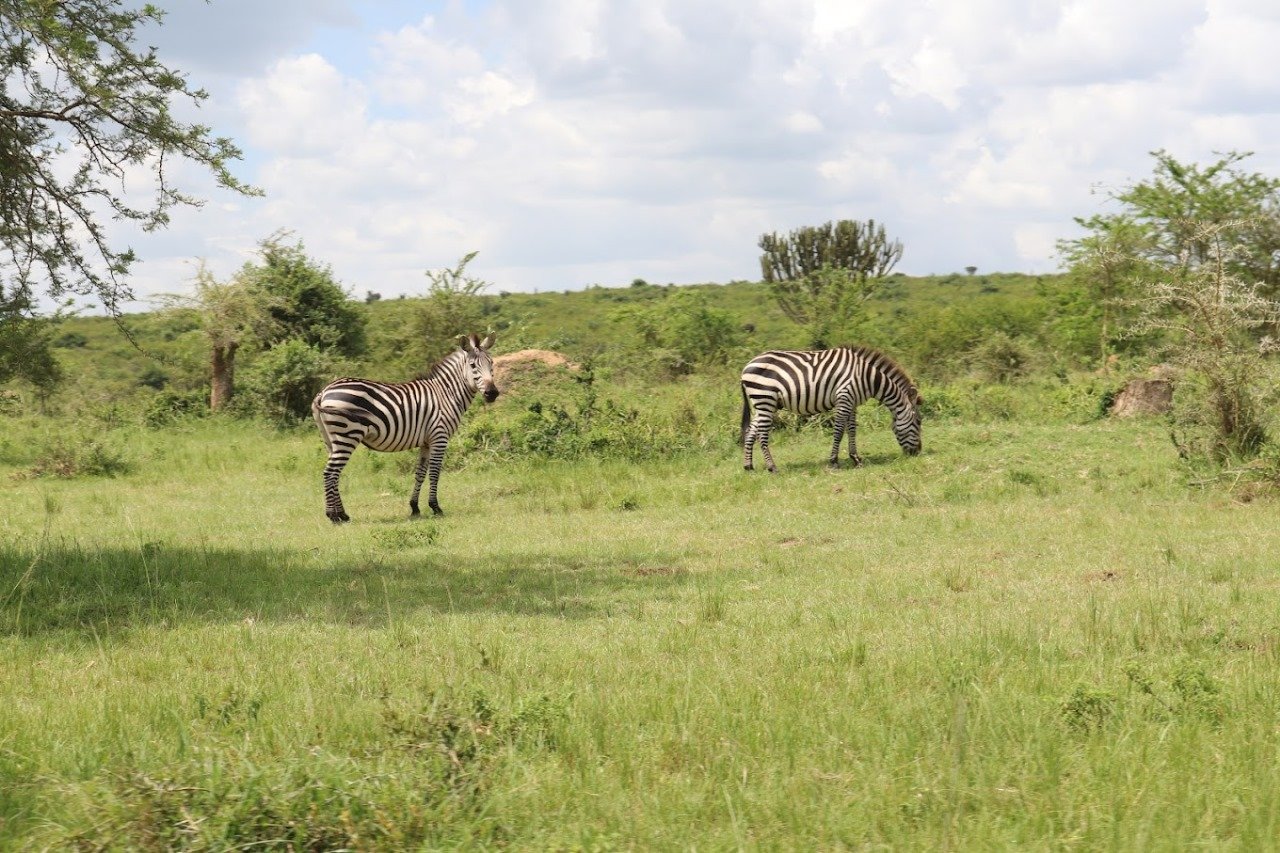
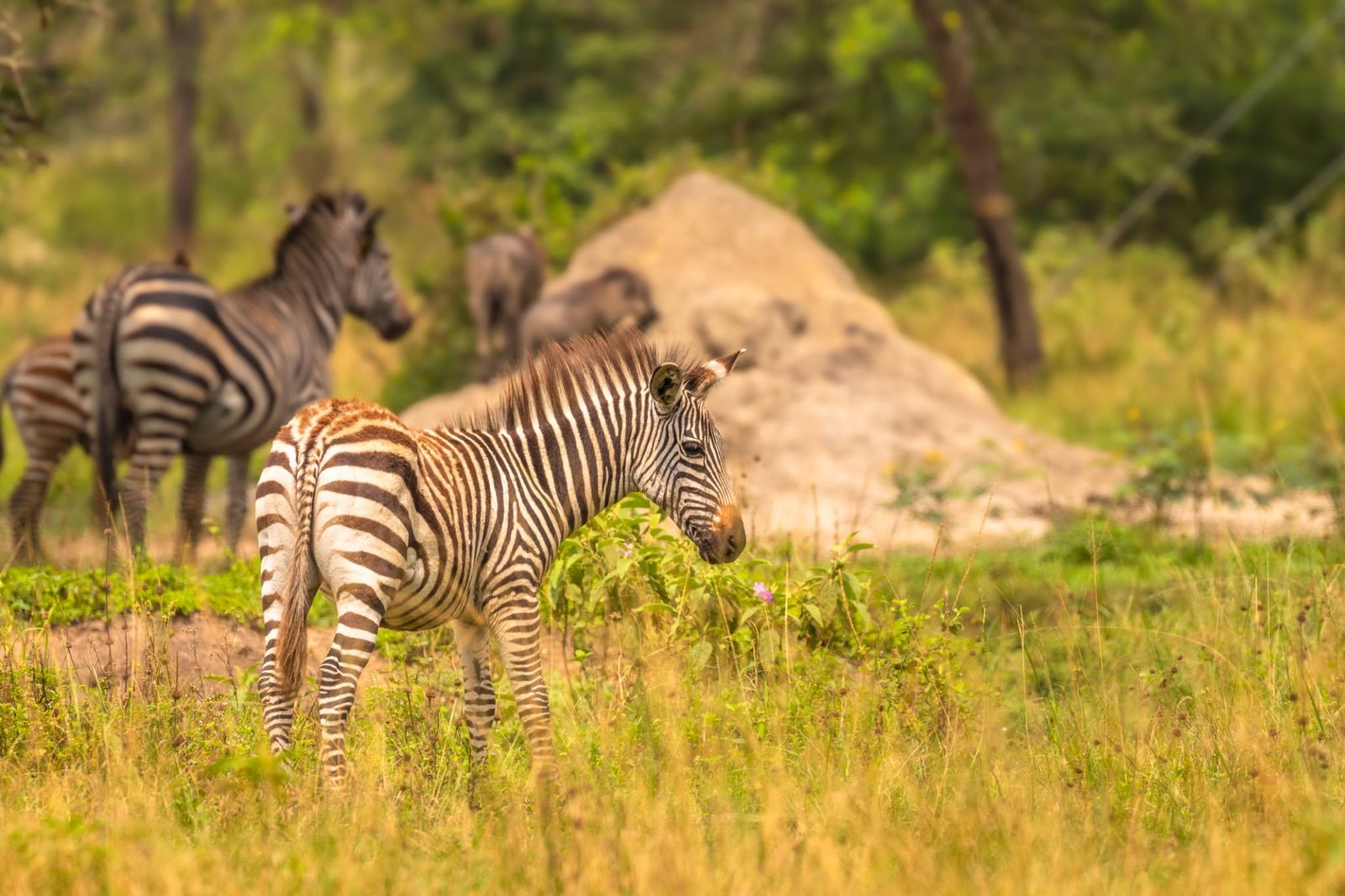
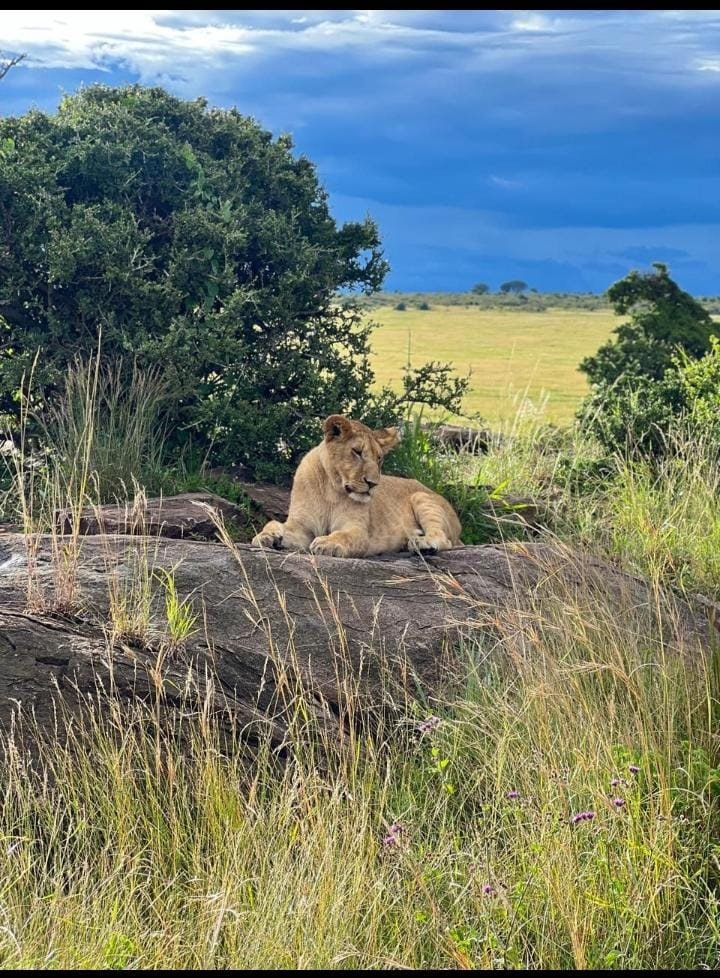
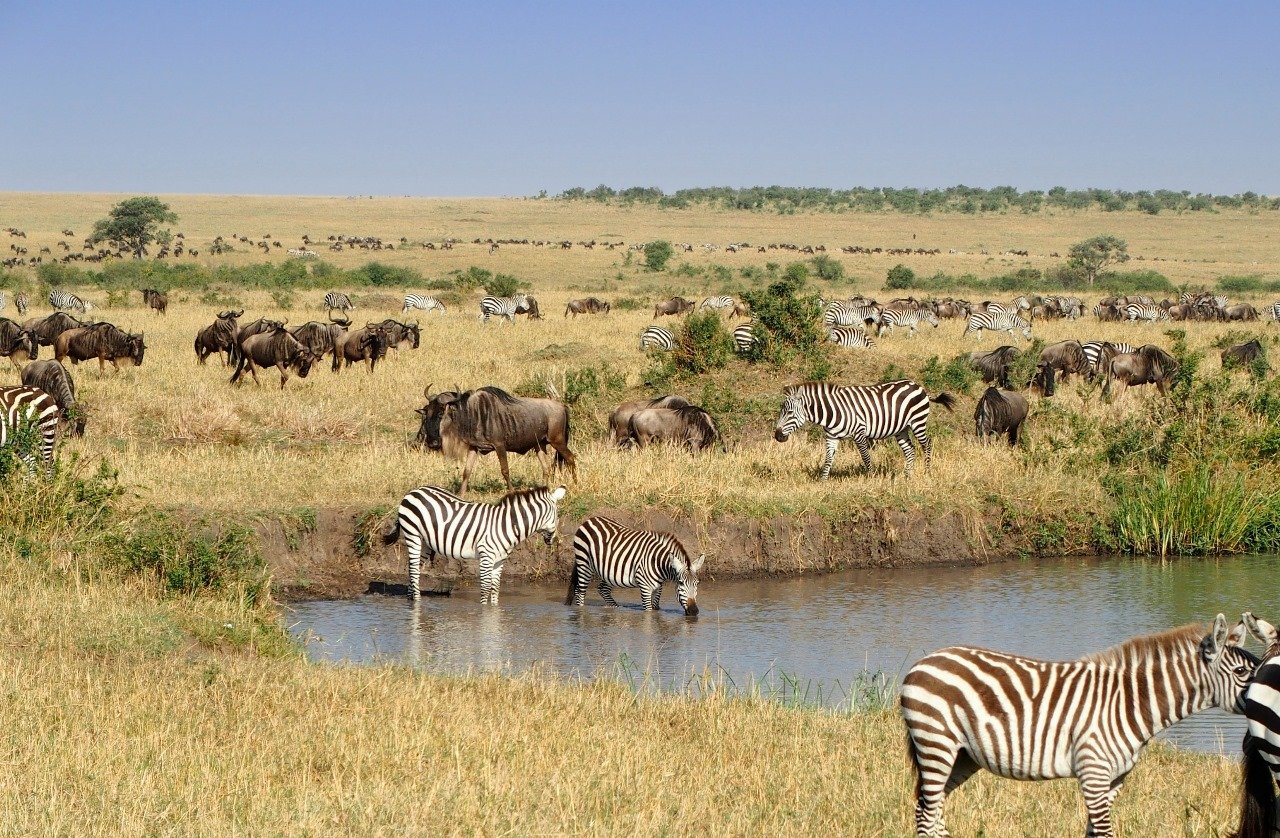

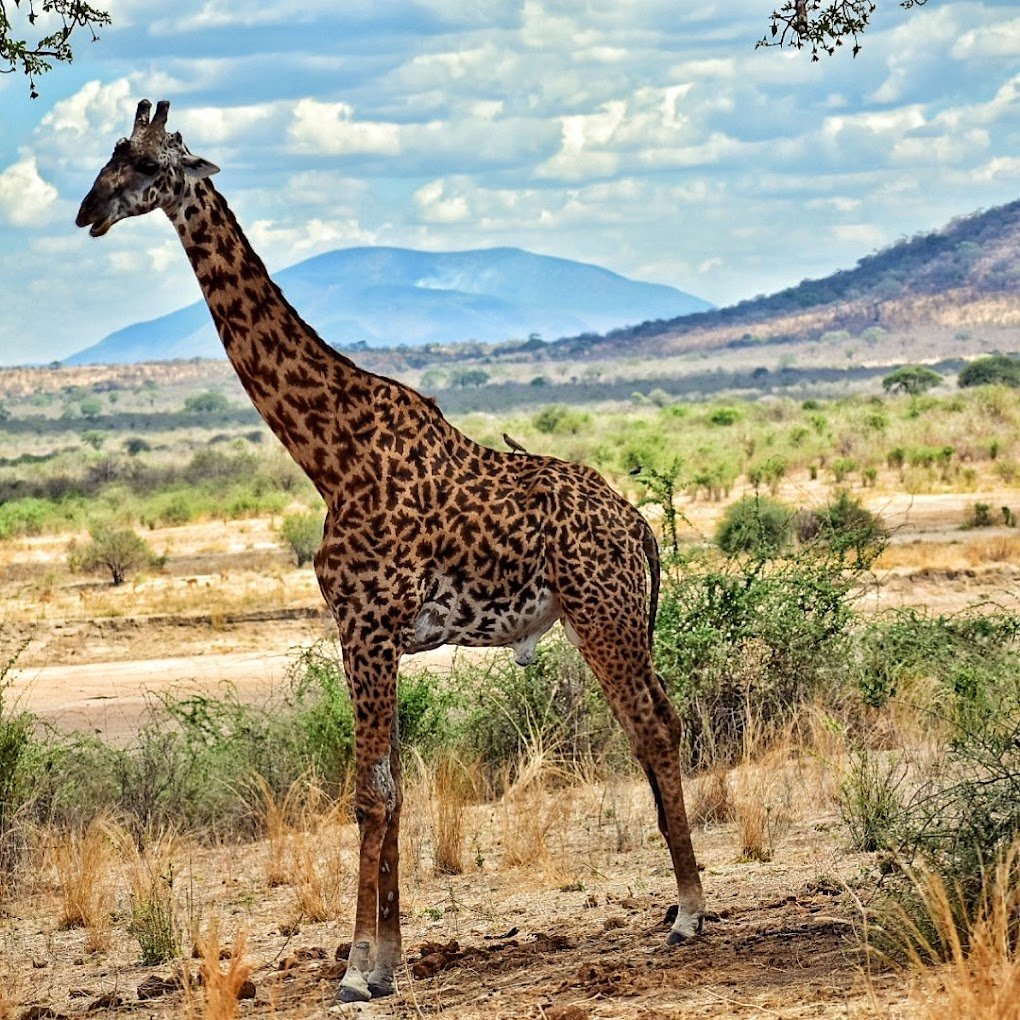
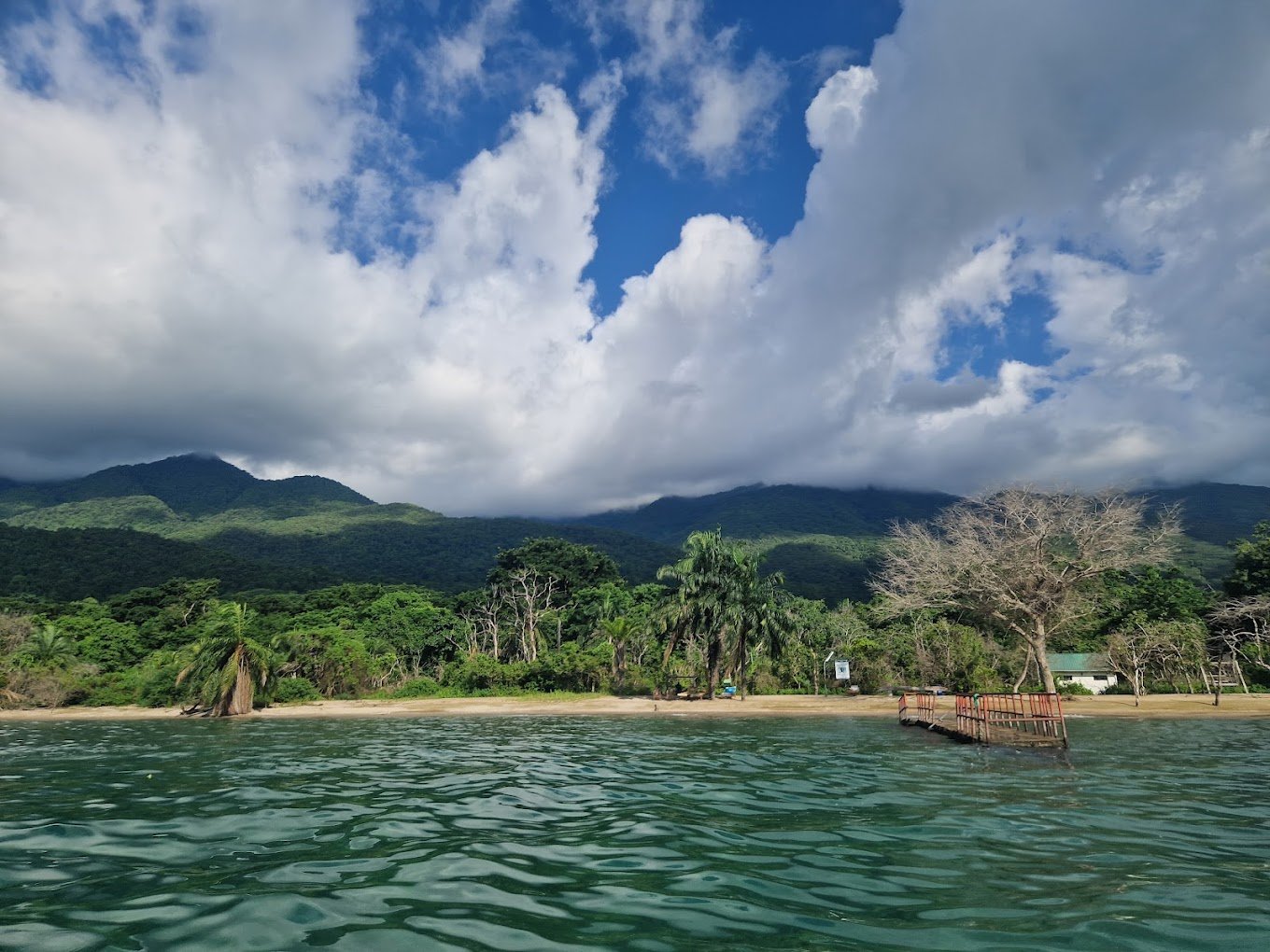
Our top ten Tanzania safaris and holidays
Every one of Sovereign Safaris’ tailor-made itineraries is as unique as the traveler embarking on it.
The sample itineraries we present here are merely a glimpse of what is possible, complete with costs and details. They are flexible, not fixed; you can mix and match any combination of camps and lodges that logistics allow, and begin your journey on any date you choose, subject to availability. Explore all 24 Tanzania safari options here.
Most of our trips in Tanzania feature Fly-in Safaris, where you travel by scheduled light aircraft between different destinations, staying a few days at each camp or lodge. You’ll explore the diverse landscapes in an open safari vehicle, guided by experienced local driver-guides, and join other guests on daily game drives.
On a Guided Safari, you travel across Tanzania in a private safari vehicle equipped with a pop-top roof and sliding windows, led throughout by the same expert driver-guide.
Our Beach Holidays highlight the idyllic beaches of Tanzania’s coast and the enchanting islands of Zanzibar.
Contact Sovereign Safaris now to speak with a Tanzania specialist who can answer your questions and create a personalized itinerary that’s just right for you.
Our travelers' wildlife sightings across Tanzania
When traveling through Tanzania, many of our travelers document their wildlife encounters—be they of elephants, cheetahs, or rare black rhinos—and generously share their records with us.
This “citizen science” provides a unique snapshot of wildlife distribution, enlightening you on where you have the best chance of spotting a particular species during a Tanzanian safari (Learn about this survey’s methodology.)
The percentages below represent the average likelihood of a safari-goer observing various large mammals in their natural habitats. Note that species with limited distributions, such as the black rhino, can achieve high visibility scores in the regions where they are found. For more detailed information on a specific species, click on its picture below and follow the link in the pop-up window.
For a broader view of Tanzania’s wildlife sightings, explore our interactive wildlife map of Tanzania showing the key locations for encountering various species.
Wildebeest
99% SUCCESS
Giraffe
99% SUCCESS
Lion
90% SUCCESS
Wildebeest
99% SUCCESS
Rhino
60% SUCCESS
Spotted Hyena
90% SUCCESS
Hippo
80% SUCCESS
Gerenuk
60% SUCCESS
Warthog
90% SUCCESS
Flamingos
60% SUCCESS
Tortoise
20% SUCCESS
Ostrich
70% SUCCESS
Holidays and Safaris in Kenya
Sovereign Safaris understands Tanzania like no other safari operator: our specialists have years of experience traveling and living in the country. We guide you to make the best choices for your trip, drawing from our own extensive experiences with honesty and enthusiasm.
The Serengeti ecosystem, encompassing the Serengeti National Park and the adjacent Ngorongoro Conservation Area, is Tanzania’s premier wildlife area. Most travelers make a point to visit this iconic region, famed for its vast plains and the spectacular annual wildebeest migration. We’ll assist you in deciding whether to stay inside the national park or opt for one of the surrounding conservation areas.
Recognized as the second top wildlife destination in Tanzania, the Selous Game Reserve (now part of Nyerere National Park) consists entirely of vast wilderness areas. Here, you can encounter the “Big Five” and also spot less common species such as the African wild dog and sable antelope. The area is particularly renowned among avid mammal-watchers and photographers for its thriving populations of diverse wildlife.
Other key safari destinations in Tanzania include Tarangire National Park, known for its large elephant herds; Ruaha National Park, celebrated for its rugged beauty and rich biodiversity; and Mahale Mountains National Park, one of the best places in the world to observe chimpanzees in their natural habitat. We cherish all these areas, and many travelers have their favorite camps to which they return time and again.
Please explore our selection of safari and beach holiday itineraries below, then contact us so that one of our Tanzania experts can help you design a personalized, tailor-made trip that perfectly suits your needs.
Our Safari Types and Experiences in Tanzania
Sovereign Safaris has an unparalleled understanding of Tanzania, with our specialists boasting years of experience traveling and residing within the country. This depth of knowledge enables us to guide you expertly, making recommendations for your trip with genuine enthusiasm and integrity.
The heart of Tanzania’s wildlife viewing is the Serengeti ecosystem, which includes the Serengeti National Park and the adjacent Ngorongoro Conservation Area. This area is celebrated for its vast plains and the dramatic annual wildebeest migration. We’ll assist you in choosing whether to stay within the national park or in one of the surrounding conservation areas.
Selous Game Reserve, now part of the larger Nyerere National Park, ranks as Tanzania’s second most prestigious wildlife locale, comprised entirely of expansive wilderness areas. Here, not only can you spot the renowned “Big Five,” but also rarer species such as African wild dogs and sable antelopes. The region is also a hotspot for mammal enthusiasts and photographers, particularly known for its thriving elephant populations.
Other key safari locations in Tanzania include Tarangire National Park, known for its elephant herds; Ruaha National Park, celebrated for its rugged terrain and rich biodiversity; and Mahale Mountains National Park, one of the best places in the world to observe chimpanzees in their natural habitat. Each offers unique experiences, and many travelers have established favorite camps that beckon them back.
Explore our curated selection of safari and beach holiday itineraries below. Then, reach out to us so that one of our Tanzania experts can craft a bespoke, tailor-made journey that perfectly matches your preferences.
A rough guide to Tanzania
This short guide includes some useful practical and background information about the country. If you book your Kenya trip with Expert Africa, we’ll send you a free copy of The Rough Guide to Kenya, a detailed travel guide written by Expert Africa’s East Africa.
-
Where to go on a first visit
-
Local flight transfers
-
Engaging with local culture
-
Tanzania food and drink
-
Tanzania's history
Where to go on a first visit
The choices might seem daunting: with its wealth of national parks, game reserves, and conservation areas, where should one start on a first visit to Tanzania?
Firstly, we highly recommend including the iconic Serengeti National Park. Throughout the year, the vast plains of the Serengeti provide a backdrop for a spectacular array of wildlife; whether it’s watching cheetahs in pursuit of gazelles, large herds of wildebeests, or lions lounging in the sun. Here, you are deeply aware of being a transient visitor in a landscape that belongs to the wild. Yes, the Serengeti National Park can become crowded, particularly during the peak of the wildebeest migration and holiday seasons. Yet, the surrounding areas, including the Ngorongoro Conservation Area and private concessions, offer more secluded experiences away from the main tourist throngs.
Another area we often recommend to contrast with the Serengeti is the Selous Game Reserve in southern Tanzania. This vast wilderness, one of the largest faunal reserves of the world, is a mosaic of riverine forests, plains, and wetlands that host an incredible diversity of wildlife including elephants, wild dogs, and numerous bird species.
If your trip includes some beach time, then Tanzania’s coast along the Indian Ocean is a spectacular choice, with the beautiful islands of Zanzibar and Mafia offering pristine white sand beaches framed by coral reefs. Here, you also have the opportunity to explore rich historical sites in Stone Town and the charming ruins scattered around the islands.
Local Flight Transfers
The primary aircraft for local aviation in Tanzania is the Cessna Caravan. This turboprop plane generally seats 9-12 passengers along with the pilot and co-pilot. If you're not accustomed to flying in unpressurised light aircraft, the experience can be thrilling or a bit surprising initially. Expect the aircraft to be slightly shaken by wind and thermals and to land at several bush airstrips throughout your journey. Our affiliated airlines aim for reliability, but the exact route and schedule for any given flight are typically confirmed only the day before, when camps receive notifications about arrival and departure times.
Engaging with Local Culture
Village visits are a common excursion provided by many safari camps, especially in the Maasai and Samburu areas. These often involve visiting a local compound where you may make a modest donation or purchase souvenirs. The experience can range from deeply insightful to somewhat staged, and may include a short performance. Engaging in conversation with your guide or camp staff can also provide meaningful cultural insights.
Tanzanian Food and Drink
Most Tanzanians start the day with national staples such as sweet, milky tea paired with chapati or mandazi. Ugali (a stiff, polenta-like corn mash) is commonly consumed as the main meal of the day, accompanied by a protein source like fish or meat, and often served with greens or a vegetable relish to enhance the flavor. Traditionally, celebratory meals largely feature meat, with grilled meat (nyama choma) and ugali considered near-national dishes. However, the coastal areas, particularly Zanzibar, are renowned for their distinctive cuisine that incorporates a blend of spices and flavors from the Indian Ocean, Middle East, and India.
In hotels and upscale safari lodges, the dishes served are often internationally familiar. Expect menus featuring soups, bread rolls, assorted salads, and fruit bowls—often sourced from the lodge's organic garden. Main courses typically include roast and stewed beef, pork, lamb, and chicken, along with well-known vegetables and occasionally fish. Desserts might feature favorites from a British-European selection like lemon meringue pie and profiteroles. Many establishments also host themed nights such as curry or Swahili nights, offering an array of aromatic dishes from the coastal regions, and they usually rotate menus every five days to keep dining experiences fresh and varied.
As for beverages, local lager-style beer and popular soft drinks are readily available, along with imported wine, often from South Africa.
Tanzania’s History
Tanzania holds some of the most significant early human fossils, prominently featured at sites like Olduvai Gorge. The narrative of human evolution in Tanzania is enriched by these archaeological treasures. Early inhabitants, utilizing stone tools, laid the groundwork for subsequent cultural and technological advancements.
From around 500 AD, Bantu-speaking peoples migrated into the region, significantly influencing the local hunter-gatherer communities. These groups introduced iron-smelting technology and agriculture, leading to the development of complex societies. By the first millennium AD, coastal areas began to interact with Persian and Arab traders, leading to the flourishing of the Swahili culture along the Indian Ocean coast, characterized by its distinctive architecture, language, and trade networks.
The arrival of Portuguese explorers in the 16th century introduced new crops from the Americas, such as maize, cassava, and peanuts, which became staples in the Tanzanian diet. The Portuguese influence was soon supplanted by Omani Arabs, who established the Sultanate of Zanzibar, profoundly impacting the political and cultural landscape.
In the late 19th century, Germany and later Britain colonized the mainland, known then as Tanganyika. This period was marked by resistance from local communities, notably the Maji Maji Rebellion against German rule. Post-World War I, the League of Nations mandated the territory to Britain, under whose administration significant infrastructural and educational developments occurred.
Tanzania gained independence in 1961 under Julius Nyerere, who later initiated the ujamaa policy, promoting village-based socialism and self-reliance. Though well-intentioned, ujamaa led to mixed economic results and was eventually phased out in favor of more capitalist reforms in the 1980s. The union between Tanganyika and Zanzibar in 1964 formed the modern state of Tanzania, a nation proud of its peaceful political climate and ongoing efforts towards economic stability and growth.
Today, Tanzania is celebrated for its wildlife conservation areas and national parks, alongside a burgeoning tourism industry. Balancing economic development with the needs of its diverse population remains a central challenge for the country moving forward.
Maps of the principal regions for a Kenya safari
These two quite different maps help you to understand the scale and features of Kenya: the GOOGLE MAP shows the country’s diverse topography and landscapes: a country more than twice the size of the UK and 50 per cent bigger than California incorporates sweeping plains and highland peaks, arid deserts and an indented, mangrove- and beach-fringed coastline supporting coral reefs. Do click on Google’s satellite view as well as the regular “Map” and “Terrain” views. Then our REFERENCE MAP is Expert Africa’s own artwork map, clearly identifying Kenya’s national parks, national reserves and private and community conservancies.
